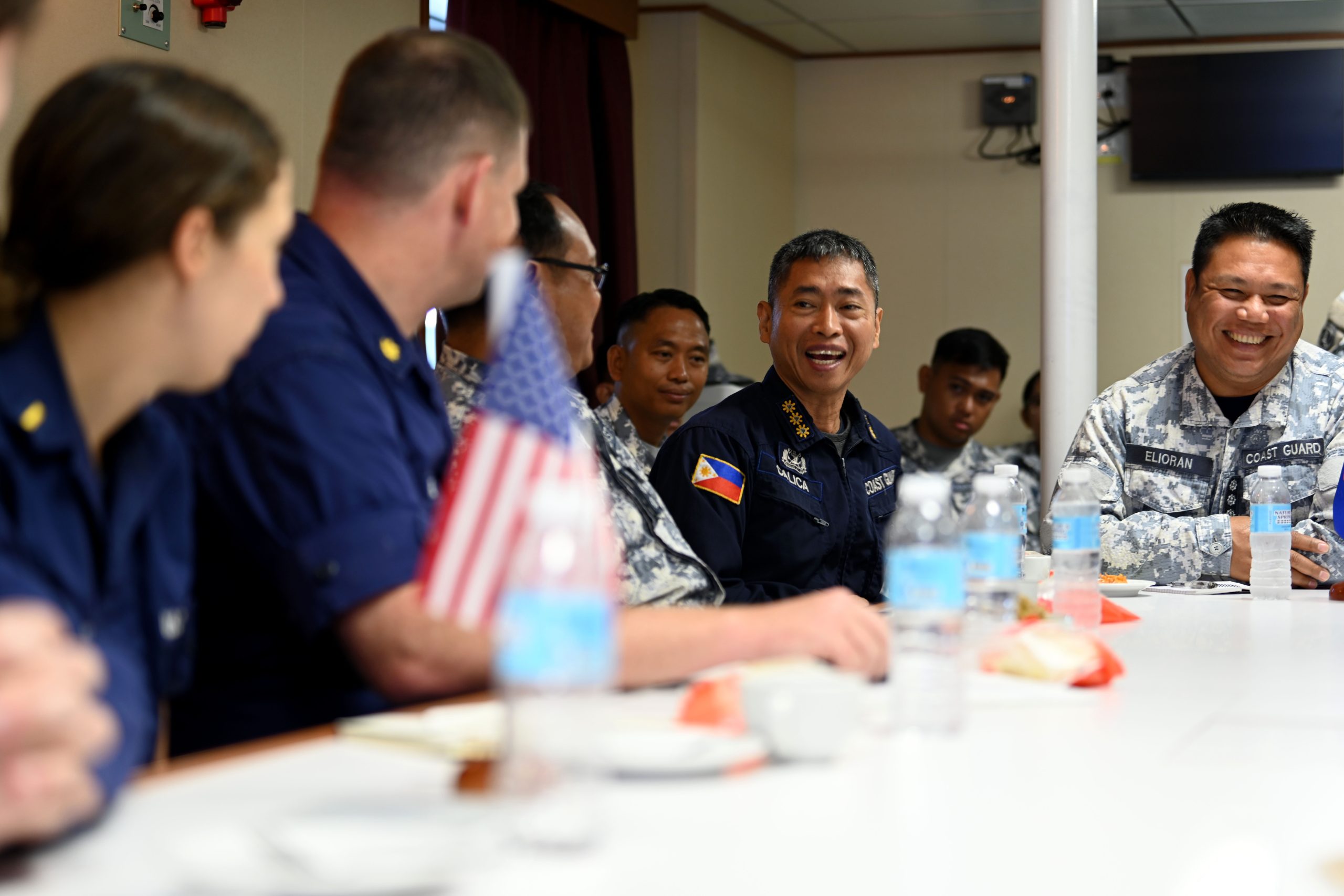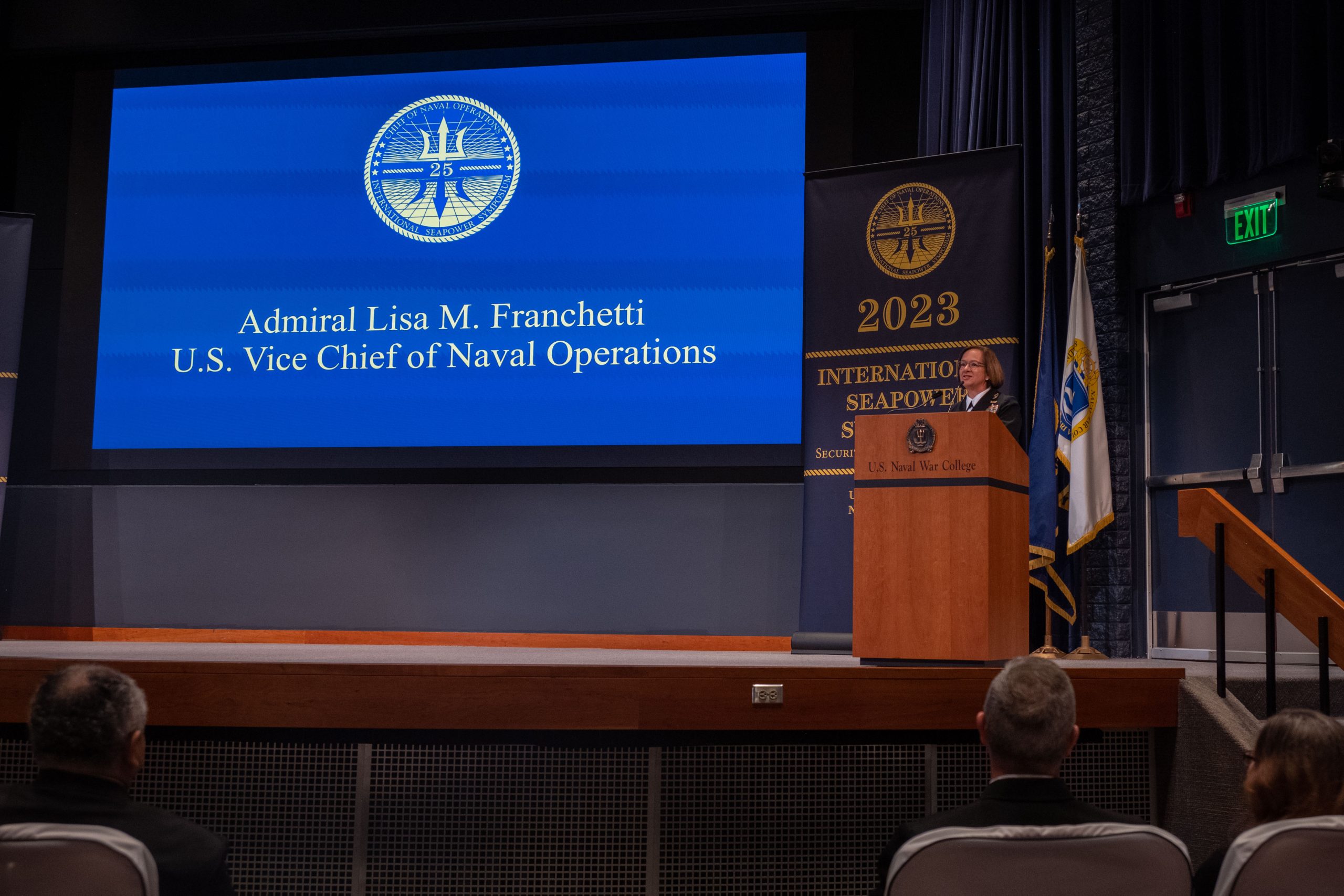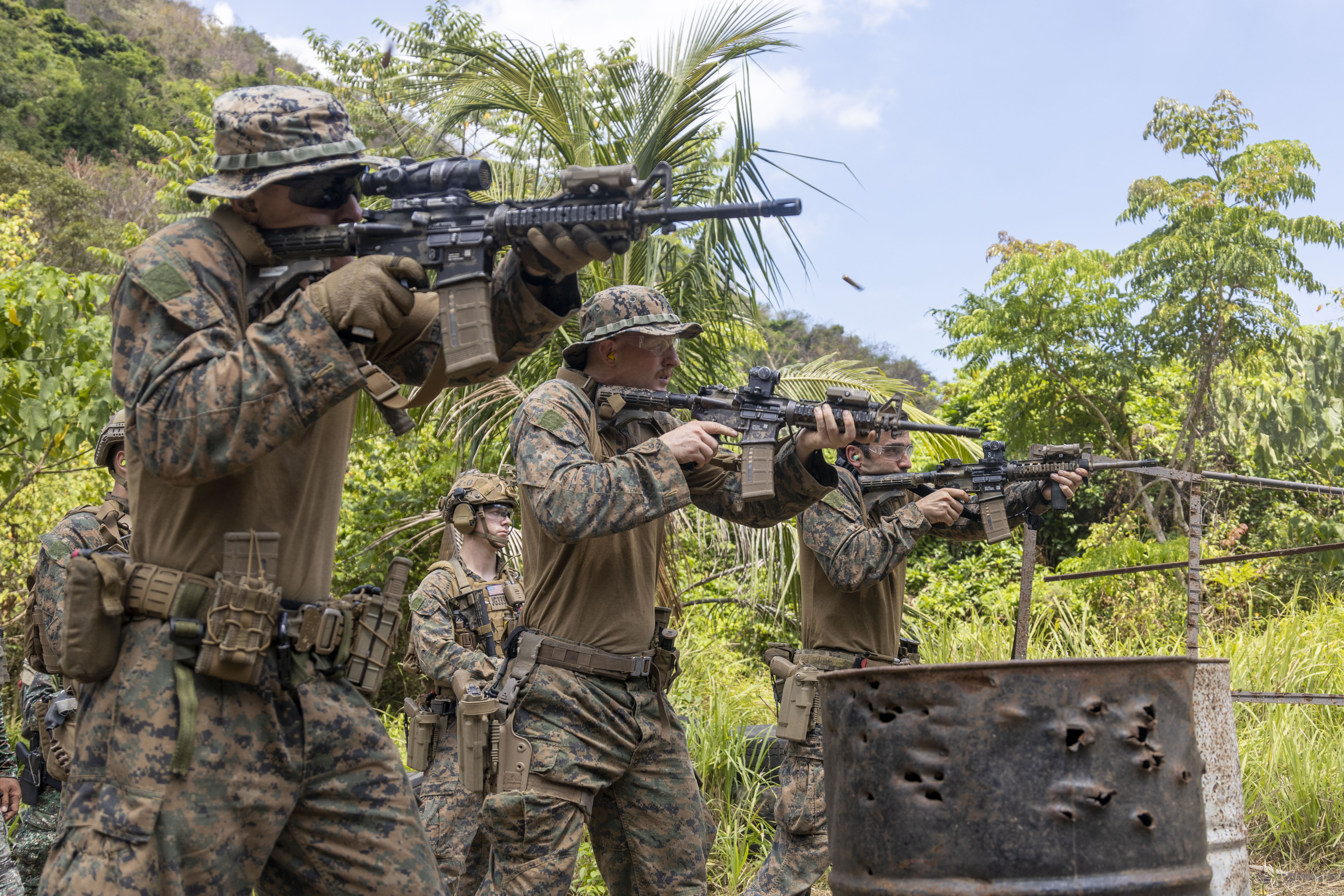
NEWPORT, R.I. – The growing military and economic pressure from China in the Western Pacific and beyond is pushing international navies to seek new partnerships and accelerate modernization, U.S. naval leaders told USNI News at the International Seapower Symposium on Wednesday.
Delegates from more than 100 navies and coast guards descended on the Naval War College this week for the biennial ISS hosted by Vice Chief of Naval Operations Adm. Lisa Franchetti.
In the bilateral meetings between navies and coast guards on the sidelines of the conference, conversations have focused on practical solutions to common problems in increasingly contested seas, U.S. Navy and Marine leaders told USNI News on Wednesday.
“There’s a lot of focus on all of the challenges as well as the opportunities that people are facing in the maritime… people are concerned about [illegal, unreported, and unregulated] fishing, energy, food security,” Franchetti told USNI News in an interview on Wednesday.
“How are we going to incorporate technology? Unmanned? A.I.? And of course, all of them are talking about recruiting challenges. Every nation I’ve talked to, they have some concerns about their people and how do we share best practices on recruiting but also retention.”
Navy Secretary Carlos Del Toro said that in the more than ten bilateral talks he had at ISS, there was a particular emphasis on how to accelerate foreign military sales cases.
“We want to try to advance [FMS cases] between nations so that they can get more of the technology to more collaboratively operate with us. And the needs are different from country to country,” he told USNI News in a Wednesday interview.
Understanding the maritime area around an individual nation was a major concern for many of the delegates, especially tracking China’s expansive fishing fleet that’s been accused of operating illegally in waters as far away as South America and Africa.
Since the 2000s, the thousands of ships in the Chinese fishing fleet have taken advantage of some countries’ inability to detect and enforce their own waters, Navy officials said.

“I have just finished conversations with several South American countries for example, where I’m encouraging these unmanned technologies to highlight the illegal fishing that’s actually taking place by China,” Del Toro said.
“There’s always a tremendous push for maritime domain awareness but as it applies to largely illegal fishing as well … I think it’s fair to say that there is a common concern across the globe, quite frankly, in all our regions about illegal fishing on the part of China.”
Del Toro and acting Marine Corps Commandant Gen. Eric Smith said there is a growing effort to expand cooperation and make friendly forces more interoperable.
“We’re all looking at the schedule of upcoming exercises throughout the next year to collectively be able to participate to bring the right capabilities from each of these countries, whether they be manned capabilities or unmanned capabilities, to be able to collaborate on these exercises that are continuing to grow in complexity,” Del Toro said.
Smith told USNI News that the U.S. and Filipino marines’ training during this summer’s Balikatan exercise series was an example of expanding interoperability with allied partners and introducing new systems. That included bringing in an unmanned Marine MQ-9A Reaper to participate in the exercise.

“When we go there and introduce new capabilities, we do that with the permission of the government,” Smith said.
“When we then introduce capabilities, long-range fires, the ROUGE vehicle, AN/TPS-80 radar, that’s because we’re sharing capabilities with our allies and partners. We don’t do it under a cloak of darkness. We say, ‘Here’s what we have to offer you. We can help you with maritime domain awareness’.”U.S. ambassador to Australia Caroline Kennedy told delegates that there’s a larger White House effort to preserve the current rules-based international order.
“President Biden is working hard to manage our relationship with China in a responsible way. It’s why he wants to maintain your new lines of communication, engaged with allies and partners,” she said in a speech on Wednesday.
“Sailors are first to see the storms before they reach the shore. The most important advantage navies have is their years of sharing information, cooperating in global challenges, and building the trust that makes good decisions possible … we’re also determined to keep the peace in the security space.”
Franchetti restated the point in her own keynote on Wednesday.
“The U.S. Navy will lead when asked and support when best,” Franchetti said in her Wednesday keynote.
“In this interconnected world, every navy and every coast guard counts. “





